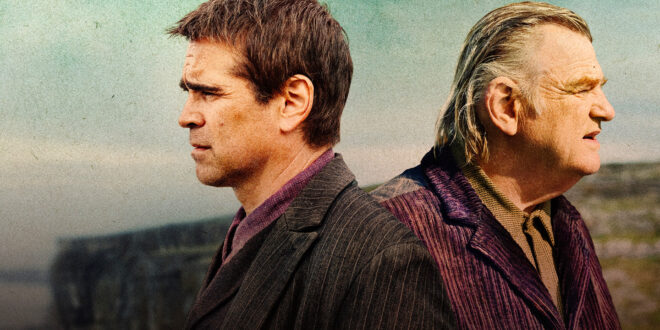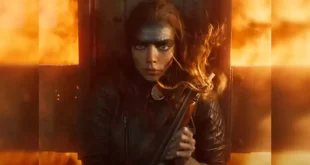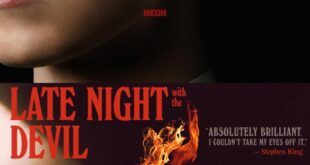Tragicomedies straddle the lines of funny and devastating. The idea is that there are humorous moments to be found in places of human suffering. The suffering in The Banshees of Inisherin includes lost friendship, loneliness, inadequacy, and the ever-present reality of death. Thanks to Martin McDonagh’s searingly funny screenplay, the film becomes a profound rumination on the failures of humanity.
Set during the end of the Irish Civil War in 1923, The Banshees of Inisherin is about a small fictional island off the coast of Ireland, seemingly unbothered by the current crisis on the mainland. The two main protagonists, Colm (Brendan Gleeson) and Pádraic (Colin Farrell) are suddenly at an impasse after Colm declares he wishes to be friends with Pádraic no longer. This is devastating for Pádraic because, on this small island, all he has is his sister Siobhán, his pet donkey Jenny, and the conversation and friendship he gets from Colm at the pub every day. Colm claims that Pádraic is dull and feels he’s being held back from composing music as a fiddler. He wants to be remembered and feels that time is running out. This decision has dark results on both their lives as Pádraic cannot seem to come to terms with Colm’s determination and his persistence that they are not friends. This even gets to the point where Colm threatens and cuts off a finger to keep Pádraic away.
I felt a close connection to the themes of this story because I, too, have lost friends over the years and quite suddenly over misunderstandings or mistakes. Pádraic is genuinely baffled by Colm’s decision, and his world begins to crumble. He tries to fill the void by spending some time with the town idiot Dominic (a brilliant Barry Keoghan), but it’s not the same. At the heart of things, every character in the movie is lonely. This includes Siobhán as well, who wants something more for her life. We’ve all struggled with loneliness and feel that our lives are static and stale. While we don’t go through the extremes Colm goes through to change that, we do it in other ways, like taking a new job, moving, or starting a new hobby.
In addition to the wicked dark humor, the best thing about McDonagh’s script is that he doesn’t take either side in Colm vs. Pádraic. We genuinely feel bad for Pádraic because, as he continuously points out, he is a nice guy, but we also come to understand Colm’s depression and his reasonings for moving on. While the movie is ultimately about the breaking up of a friendship, there are also powerful statements against war. One can’t help noticing the Irish Civil War happening in the background that the conflict between Colm and Pádraic has the same hopelessness and futility of war.
Brendan Gleeson and Colin Farrell are both fantastic. This is their second pairing with McDonagh after 2008’s In Bruges, a much different film than this. In Bruges felt more Tarantino-esque, Inisherin is more Ingmar Bergman-like. While the screenplay could have easily worked as a theatrical play, what breaks the potential staginess is the beautiful cinematography by Ben Davis and the fact McDonagh opens the world of Inisherin. The other two magnificent performances are by Barry Keoghan and Kerry Condon, who is equally excellent and essential to the story as Gleeson and Farrell. All this leads to a bizarre, dark, perhaps strangely hopeful conclusion. For those patient moviegoers, The Banshees of Inisherin will unlock something deep within your humanity and soul.
 Movie Finatics The Place for Movie Lovers
Movie Finatics The Place for Movie Lovers




